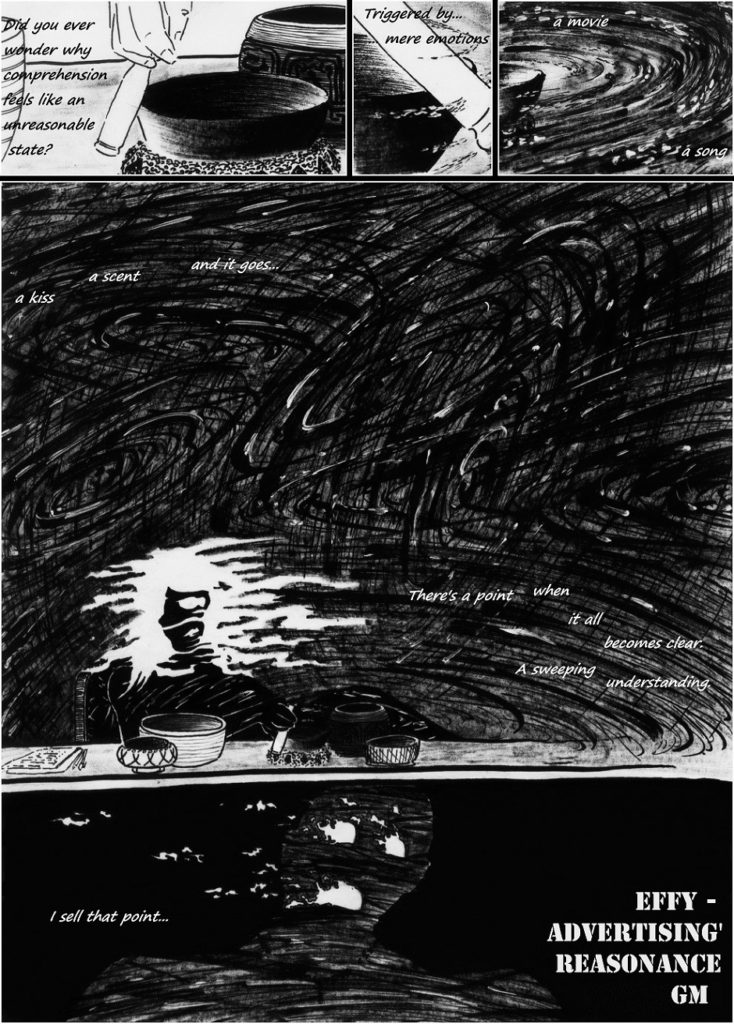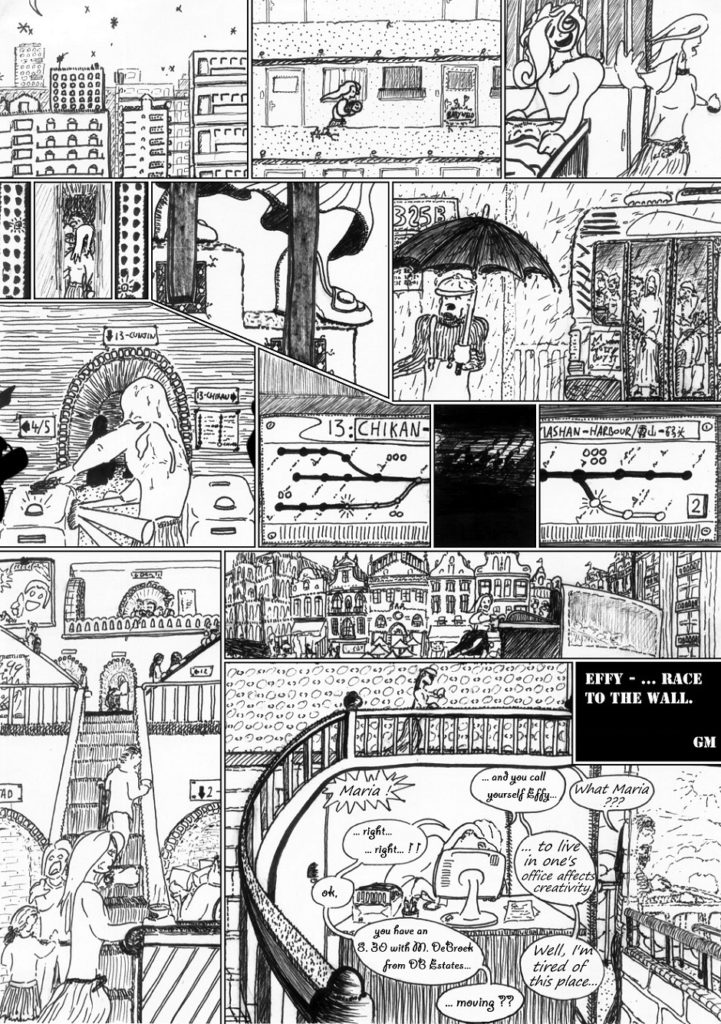Fourth batch of four episodes from Effy – The Living Efficiency. Onboarding, 5S, Advertising or Commuting and real estate… G.M. is back in the office with technicalities about efficiency’s multiple facets.
Don’t miss his weekly updates on Effy’s own page or through Tapas!
Training aligns talent with knowledge required to perform at a competitive level, and fulfill organization’s needs. Organizations’ needs though, they are changing drastically everyday, just to cope with technology leaps or globalized markets. To remain relevant, talents must adapt their knowledge to new needs. Hopefully, here comes ongoing training and continuing education programs…
So here’s our second week on human resource’s learning and development function following Onboarding. Amazingly enough, internet has it all, with a full blog dedicated to this topic, namely bridging on boarding and ongoing training programs.
Benefits of such programs are well documented, However, what is less documented, is the necrotic effect that layers of additional information have over talents’ clarity. Hours and hours of continuing training buries core objectives and requirements under a pile of sometimes confusing contradictions, leading to lower motivation and misunderstandings.
Take Effy. Early clarity is turning into an obscure obsession as time passes. New concepts are attached as new managerial trends come and go. Social responsibility and robotization, sustainable development and financial profitability, flexible activity and stable returns, and it goes on.
“Advertising Reasonance” (or the resonance of reason) is the latest episode from Effy – The living efficiency, and the third installment on communication and marketing. After abusing from the marketing mix in “P is for Pity” and from persuasion technique in “Effy Argumentation“, Effy now tackles advertisement.
Advertising aims at “attracting public attention to a product or business”. This basic definition from the free dictionary is slightly outdated in the age of digital marketing. Nowadays, advertising is about crafting a message. A message targeted at specific customer personas (video tutorial need be, or a guide from Smart Insights), with clear objectives to increase conversion rate. So that’s digging into public emotions to trigger desired behaviors.
From there, it both simplifies and complicates the task. On one side, it simplifies because the target audience is more likely to be perceptive to the message to start with. On the other, it complicates because expectations are high, while specific personas border possibilities.
The living efficiency must have found the right vibe, the one that resonate with reason. She defines her advertising strategy as “reasonance”
The world of production has embraced 5S with the hope to approach efficiency (5S definition here if needed). But what few people know is that the creator at the origin of 5S theory, Hiroyuki Hirano, got the idea after visiting Effy’s room.
As you can see, Effy’s arranged her room in such a way to ensure and optimize the night experience for her and her guests.
- Seiri (or sort): She removed all unnecessary items, keeping only the essential. Example include the smoked ham hanging at bed feet to cater for mid-night cravings.
- Seiton (or set in order): She positioned all items right in their optimal place to reduce waste of time and improve the sensory experience. Pillow is right by the window. Keys are exactly a step away from both bed and door. The sound system (this was back in the 80’s) is at arm-length on the way to bed. And so on.
- Seiso (or shine): She cleaned the room to immediately spot abnormalities. Her spotless glass and bottle immediately trigger refill when needed.
- Seiketsu (or standardize): She dedicated a color code to align with visitor. Yellow candle means quiet night. A purple candle means kinky night. A red candle means that the red tape and cling films would be in use…
- Shitsuke (or sustain): She practices every night the functionality of her room, and gets feedback from visitors to implement improvements. The night after Hirano’s visit, she decided to get a land line closer to the bed, so that calling emergency would be faster when guests’ bliss lasted for too long.
Since, some new visitors of Effy’s room got inspired and developed new S, along with a wide range to new theories such as Lean Manufacturing, Kanban, Total Quality Management (TQM), Kaizen, Six Sigma or Just-in-time (JIT). All these were based on Effy’s optimal room that enhanced night sensory experience.
Note: The real origin of 5S can be found in multiple site, such as this one.
Effy’s “Race to the wall” is an ironic contradiction. While some of us run after life commuting, others rely on real estate incomes to run away from city’s routine.
- Commuting
Where I live in Shanghai, the average commuting time is around 45min one way (source China Daily). So it means that on average, a Shanghai worker spend 1.30 hour every day on transportation alone.
Shanghai is on the high-end, and sometime considered one of the worst city in the world (source Transport Geography 2014). Country wise, Israel, UAE and India tops the list, with around 48min~45min (source Dalia 2018). Japan with 39.5min is on the high end too (source 2015), in contrast, U.S. is around 26.6min on average, with great disparities between New York (33.3min) and South Dakota (17min) (source Index Mundi 2018). Australian have to commute on average 16 km to get to work (source Australian Bureau of Statistics 2016).
From an Effy point of view, time spent in traffic jams (valued around the billion cny per day), standing in sweaty subways or pedaling through town does not produce much value. Commuting time negatively impacts workers life (OECD also include commuting time when assessing well-being); does little for the society as a whole; and can be roughly assumed as wasted!
To fight against such a waste of resource, some locations tried to improve transportation means, developing conventional urban cable car (world bank site) or corridor bus line (DES example), all the way to flying taxi (from Wire) and hyperloop (from Techrepublic).
Some other locations rely on developing the new technologies structure to allow companies to exploit idle time. The objective being to transform commuting into a productive time, with concrete outputs such as doing your groceries (the Korean subway supermarket), emailing your clients, and so on.
Some location reorganized urban space to modify functions by cluster and limit the need to commute altogether. This was for example, the subject of several Urban Best Practice Area pavilions (such as Rotterdam case) during 2010 Shanghai World Expo (Better City, Better Life).
Often, locations use a mixture of all these solutions to limit the effect of commuting time wastage.
- Real estate prices
In the meantime, rentals and home prices increased around 9% per year on average in Shanghai (source Global Property Guide) for the past decade, which has been ironically above salary hike. Meaning that some people were better off building their worth buying a house decade ago rather than actively working. The situation here in the delta is becoming interesting. In effect, local employees whose parents bought houses twenty years ago are no longer interested in working. The rental incomes are enough to cover their needs. This creates a social group that have difficulties to grasp the value of work. Instead, they value a more inspirational environment that improve their life, away from city center.
- Where does that leave us?
And so the world goes. Workers multitasking during commuting to gain in efficiency and make ends meet, crosses landlords that are seeking inspiration away from the city. As cities keep growing, the mechanic seems unlikely to stop anytime soon. The process impacting our environment and social inequalities, to a point of possible no return. That is if we haven’t crossed it yet.
But then again, taking Shanghai as example, economists predicted the collapse of Chinese real estate market for decades, and so far it keeps striving. Economists would probably be right one day… even a broken clock is right twice a day.












